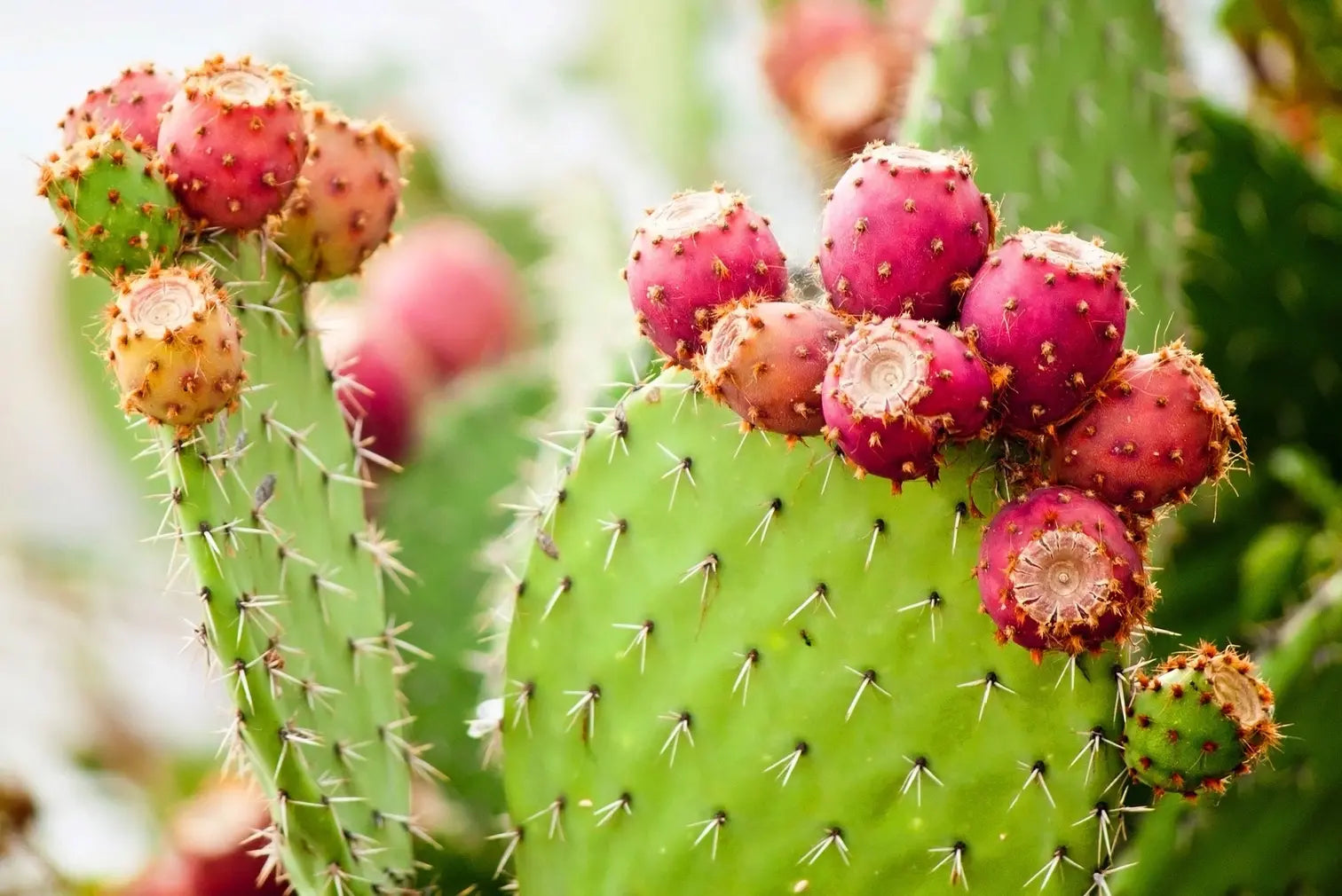What is prickly pear extract?
What is prickly pear extract?
Are prickly pear and cactus oil the same?
Are prickly pear and cactus oil the same?
What are the benefits of prickly pear extract for your skin?
What are the benefits of prickly pear extract for your skin?
Does prickly pear oil have the power to improve skin longevity?
Does prickly pear oil have the power to improve skin longevity?
Can all skin types benefit from prickly pear oil?
Can all skin types benefit from prickly pear oil?
Why is prickly pear extract incorporated into skin care products?
Why is prickly pear extract incorporated into skin care products?
How OneSkin uses prickly pear extract
How OneSkin uses prickly pear extract
- When used as part of a skin care routine, prickly pear oil can aid in smoothing, hydrating, and softening your skin due to the essential fatty acid compounds and vitamins found within.
- Prickly pear oil can reduce skin blemishes and the adverse effects of sun exposure as a result of the anti-oxidative and anti-inflammatory properties of its phenolic compounds.
- Prickly pear oil contains even greater concentrations of fatty acids and vitamins than other common skin oils, including Argan oil.
- Prickly pear oil can benefit all skin types but particularly people with dry, sensitive, or acne-prone skin.
- Prickly pear oil can reduce inflammation and irritation caused by other ingredients in your skin care routine.
- Prickly pear oil's exfoliating and soothing ability makes it a great supplemental ingredient for cleansers and other skin care products.
- When used as part of a skin care routine, prickly pear oil can aid in smoothing, hydrating, and softening your skin due to the essential fatty acid compounds and vitamins found within.
- Prickly pear oil can reduce skin blemishes and the adverse effects of sun exposure as a result of the anti-oxidative and anti-inflammatory properties of its phenolic compounds.
- Prickly pear oil contains even greater concentrations of fatty acids and vitamins than other common skin oils, including Argan oil.
- Prickly pear oil can benefit all skin types but particularly people with dry, sensitive, or acne-prone skin.
- Prickly pear oil can reduce inflammation and irritation caused by other ingredients in your skin care routine.
- Prickly pear oil's exfoliating and soothing ability makes it a great supplemental ingredient for cleansers and other skin care products.
- https://lpi.oregonstate.edu/mic/health-disease/skin-health/essential-fatty-acids
- https://pubmed.ncbi.nlm.nih.gov/21391790/
- https://pubmed.ncbi.nlm.nih.gov/23561175/
- https://pubmed.ncbi.nlm.nih.gov/33312336/
- https://www.byrdie.com/prickly-pear-oil-benefits
- https://www.healthline.com/health/about-prickly-pear-seed-oil#benefits
- https://www.ncbi.nlm.nih.gov/pmc/articles/PMC3673383/
- https://www.vogue.com/article/prickly-pear
- https://onlinelibrary.wiley.com/doi/10.1111/jocd.12891
- https://lpi.oregonstate.edu/mic/health-disease/skin-health/essential-fatty-acids
- https://pubmed.ncbi.nlm.nih.gov/21391790/
- https://pubmed.ncbi.nlm.nih.gov/23561175/
- https://pubmed.ncbi.nlm.nih.gov/33312336/
- https://www.byrdie.com/prickly-pear-oil-benefits
- https://www.healthline.com/health/about-prickly-pear-seed-oil#benefits
- https://www.ncbi.nlm.nih.gov/pmc/articles/PMC3673383/
- https://www.vogue.com/article/prickly-pear
- https://onlinelibrary.wiley.com/doi/10.1111/jocd.12891



